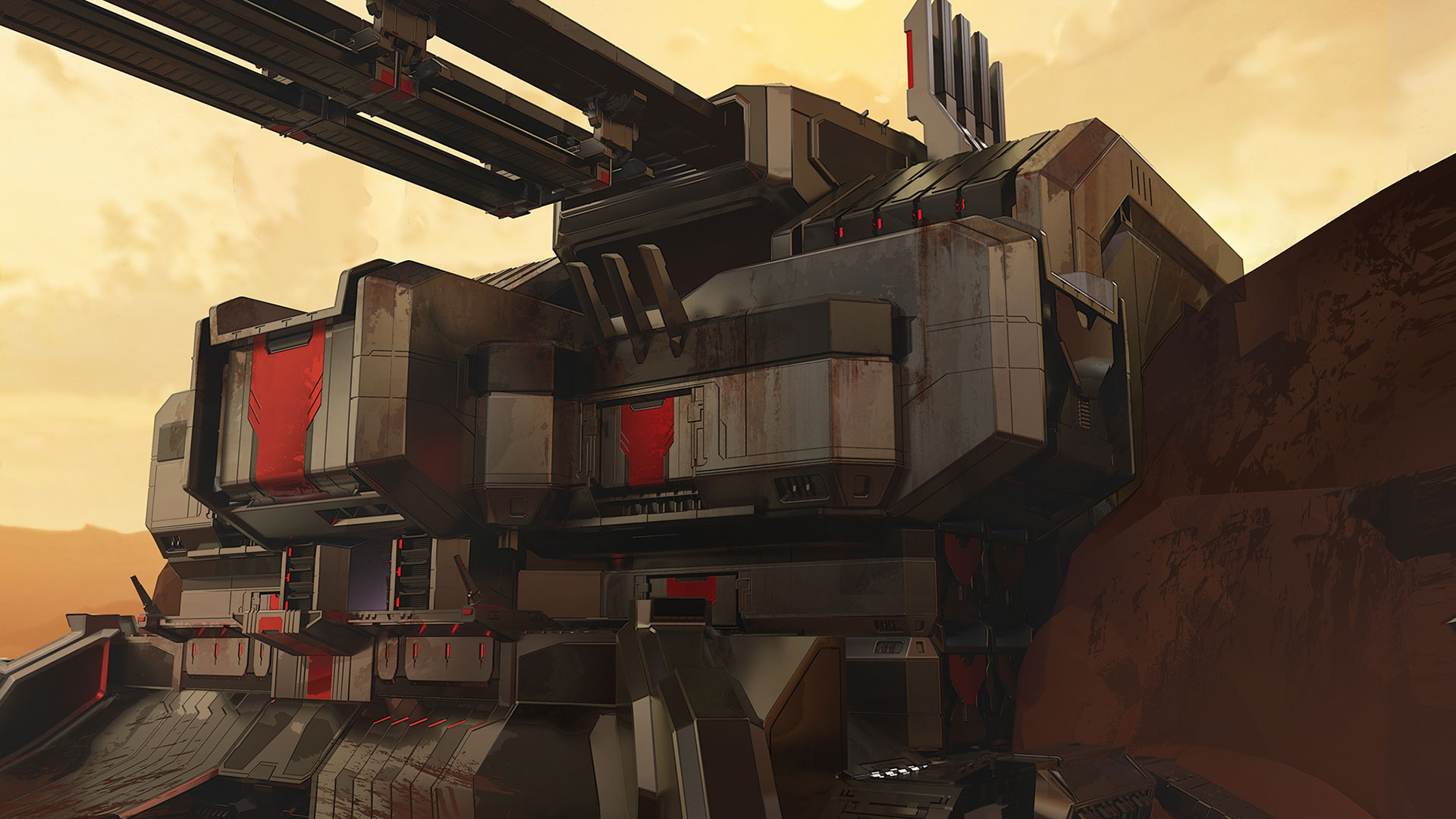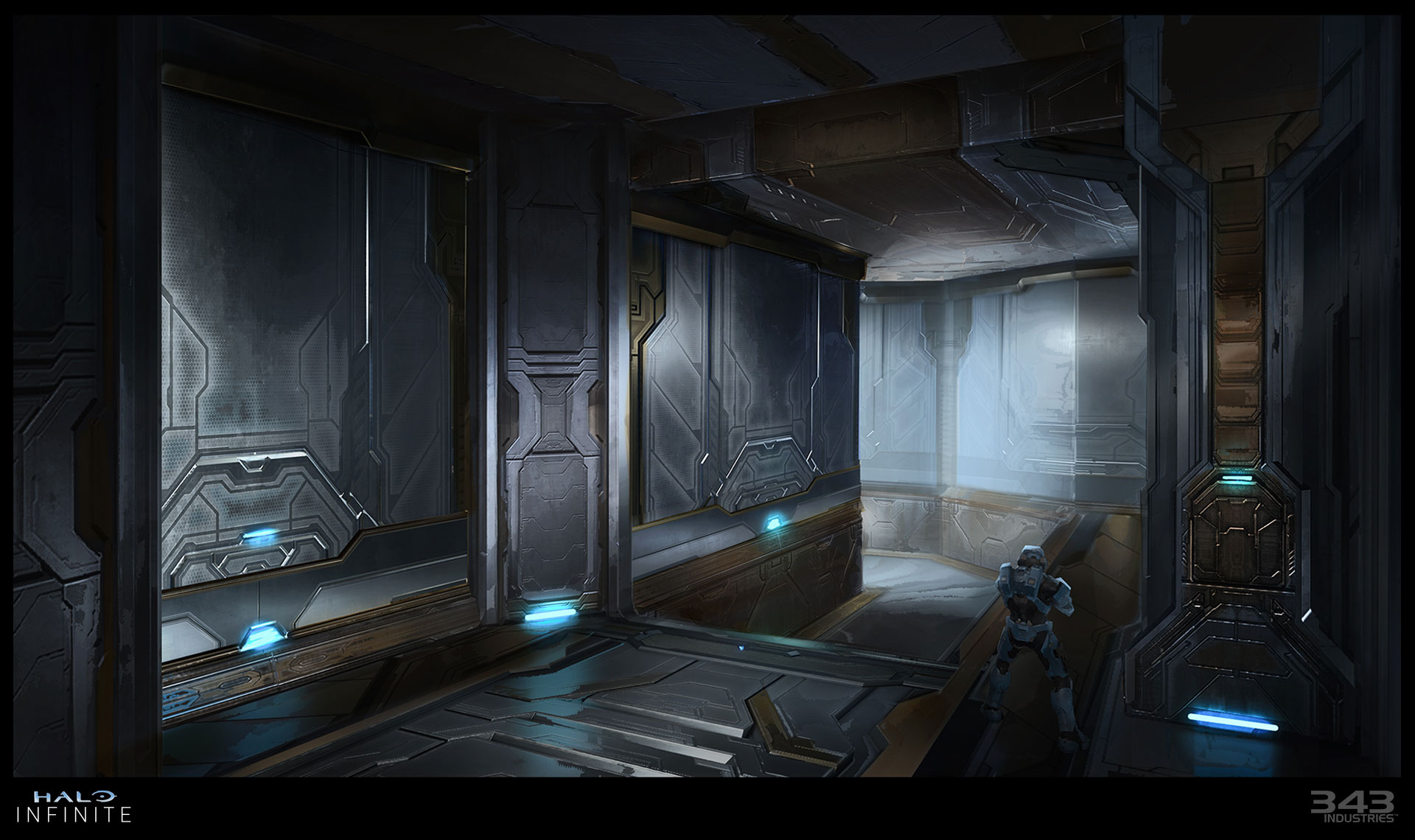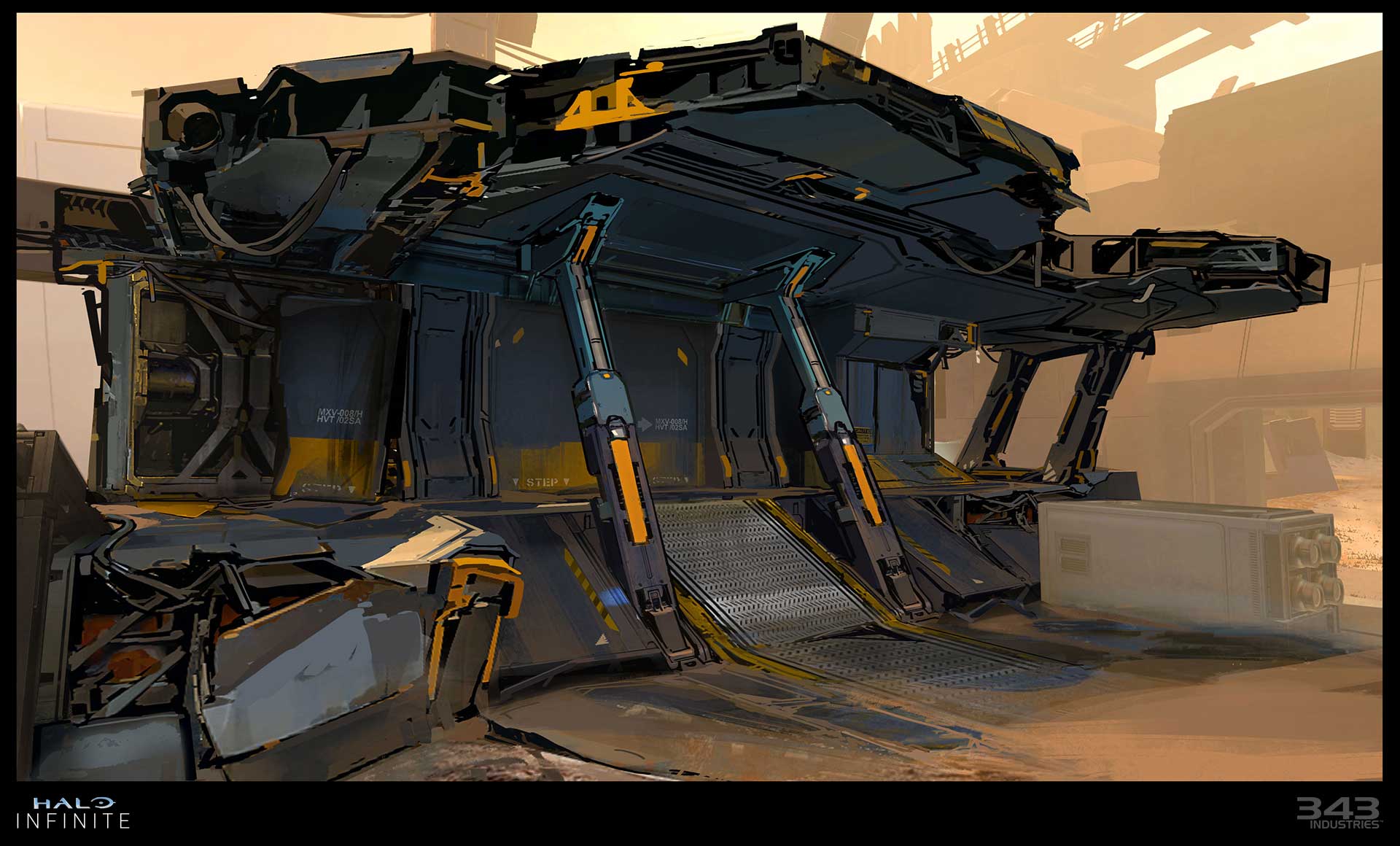Season 2 Map Previews: Catalyst & Breaker

Season 2 of Halo Infinite—“Lone Wolves”—is almost upon us!
Among the new additions in “Lone Wolves” are new story elements, new armor and cosmetics, new maps and modes. As we draw closer to release on May 3, we’re going to take a closer look at this upcoming content—starting with the two brand-new maps you’ll be playing, Catalyst and Breaker.
We’re fortunate to be joined today by Tyler Ensrude (he/him), Multiplayer Level Designer, to talk about the process of creating maps for Halo and some of the great experiences that players can look forward to having in Season 2.
But first, you want to take a look at these spaces, right?
Before we dive into the Q&A, check out this video flythrough put together by the fine folks on our Transmedia team, diving into the ancient and weathered ruins of Catalyst and the expansive, sand-blasted scrapyard site of Breaker...
I think a good place to start is the question of what was the foundation for these maps and the process of making them? Do you start with a design goal, saying “We need a symmetrical map?” or is it more of an aesthetic one to visually diversify the new maps from what players are now very familiar with?
We like to start with an idea that just gets us excited first and go from there. That idea could range from a location in the Halo universe, to an art palette, game mode, or encounter.
Every time we start something new though, it is important to consider what will make it stand out from the current selection of maps we already have. The context of experiences that players have already had in the game is definitely something we keep in mind when we look to deliver something exciting and new, and that extends across all of those factors—aesthetics, layout and design, and gameplay.
When you look at Catalyst and Breaker, it’s immediately apparent that they look very different from the maps players have become familiar with in Halo Infinite.
How would you quickly summarize Catalyst and Breaker so Halo fans know what they’re in for with these maps?
Catalyst is a symmetrical arena map nested high up inside of an expansive, tunnel-like Forerunner structure. You’ll find waterfalls pouring down around suspended catwalks, overgrown cathedral walls, and a light bridge connecting the sides of the map together.
Breaker is a pseudo symmetric BTB map set in a Banished scrapyard where each team’s base is a huge chunk of ship debris, divided by the plasma cutting beam structure in the middle. And yes, that beam is absolutely a dynamic element of the map that presents both opportunities and challenges in gameplay.
Catalyst reminds me in some ways of Coliseum from Halo 5, which was a favorite for that symmetrical, competitive action. Is that same DNA part of this map, and was inspiration drawn from any other previous Halo arena maps?
Even though the map is something completely new, there’s a ton of DNA from several legacy Forerunner locations in there. Most of that DNA is subtle, but there is quite a lot.
Some folks have definitely noted Haven vibes from Halo 4 in the first screenshot we shared back in March, but I think the biggest influence for Catalyst though was Epitaph from Halo 3. I really wanted to evoke that architectural style because it left a huge impression on me after all these years.

I think that naturally leads to the question of how you juggle drawing upon past inspiration and beloved maps from across the previous games versus the desire to create something fresh and new. How did that factor into the process of designing these maps?
Halo has provided us with so many inspirational places over the years. It’s easy to look at something already made and just do that again, but it's not as creatively fulfilling—and some sandbox evolutions may not translate as well to the “remake” experience. I think it’s important to recognize aspects of what made those things so memorable and use that as a starting point.
Forerunner architecture is typically monolithic and ornate, which opens a lot of doors creatively. The Banished art palette is much newer, and its library of reference material is still something that is growing and evolving, so there’s a great opportunity for a bit more exploration for that. A lot of Banished stuff is scavenged from the UNSC and Covenant, but there’s also core design language unique to the Brutes as well, and often these elements are mixed together so it pulls from a lot of different areas of Halo’s aesthetics.
Expanding upon what the campaign had established, the team landed on leaning heavily into the scrapyard aspect of the map and had a lot of fun thinking about how that theme could be explored.
We’ve obviously got some new modes coming in Season 2, which we’ll be doing a blog on next week so keep an eye out for that! To that point, was the design of these maps influenced by any particular modes? What can we really look forward to playing on Catalyst and Breaker?
Catalyst was meant to expand our CTF (Capture The Flag) suite, but it proved to be a solid contender for several modes and was actually the first map that our new Land Grab mode was implemented on, which quickly became a favorite amongst the team.
Breaker started out as a CTF map as well. The whole idea was to create high-tension flag moments around the laser beam.
You can look forward to all the new modes releasing in Season 2, which were made from the ground up on these new maps. Of course, all the existing modes are supported on them as well.

Breaker definitely looks like one of our most ambitious BTB maps ever, what are some of the things that set this one apart from what players have experienced in Halo Infinite?
We designed this map to embrace base versus base combat where territorial ownership is key to success. We love mixing environmental hazards with the Halo sandbox and Breaker offers an exciting variety of ways to melt your enemies. We’re also big fans of sniper battles, and Breaker’s sightlines and center lane offer risk and reward over key objectives.
The central feature of this map is the middle, which divides the spaces with ramps over a death pit which has given way to some pretty memorable vehicle runs.
We love dynamic map elements, which is something many players will no doubt remember from the remade maps in Halo 2: Anniversary’s multiplayer. For Breaker, we’ve got a giant laser that cuts through anything in its path as it moves across the map.
That death pit you’re going to try to jump your Warthog over to get your flag carrier back to your base? You’re definitely going to want to time that right because I don’t think insurance is going to cover the damage that laser will do to your Warthog and teammates. Alternatively, grab a Repulsor and time your usage wisely so you can ruin somebody else’s day!
But really, the artists and designers who brought this space to life did such an amazing job.
That all sounds incredible, thank you for joining us today, Tyler! I can’t wait to get out onto the virtual battlefield myself to explore these spaces and get carri—I mean, totally carry my team to victory!
---
We're super excited for all of you to jump into the new maps and modes of Season 2, speaking of which that’s the next thing we’ll be covering—check back next week for a look at King of the Hill, Land Grab, and Last Spartan Standing!
Last month, Joseph shared our first look at Season 2’s content with details about these maps, the RAKSHASA and EAGLESTRIKE armor cores, the newest game modes, and more. Be sure to give that a read here on Waypoint!
Oh, and for fans who are keen to learn more about the story behind these maps, we’ll be doing a deeper dive into that in our next Canon Fodder.
See you online, Spartans.

